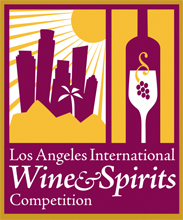Traditionally, cognac forecasts and market results are published in August in anticipation of the coming holiday seasons and winter months which regulate the sales of brown spirits. Brown spirits including cognacs are usually consumed during Fall/Winter seasons, but lately this pattern has changed.
---> Cognac is more mixed now, more of a standard/preferred drink rather than an after-thought spirit, and also more of a lifestyle beverage than a season drink.
So in recent years even in July the sales of cognac have been high. 'Companies and Markets' (companiesandmarket.com) provided a report in 2009 looking at three things (1) the growth until 2007, then (2) the sudden decline of cognac sales in 2008, and (3) forecasts till 2014. Now, in 2012 we can tell they made a good prediction anticipating that the decline would not last very long.
Further, Companies and Markets 2009 Reports stated:
- In 2008, global Cognac sales fell for the first time in over 10 years, declining by 2.76% to 11.57m nine-litre cases. This follows a record year in 2007 when sales hit 11.9m cases.
- Today the Cognac industry derives roughly one-third each of its sales from Western Europe, the US and Asia. Bureau National Interprofessionnel du Cognac (BNIC) CEO Jerome Durand says: "This leaves the Cognac industry very well-balanced to manage the risk, even though it is a global crisis."
- Camus la Grande Marque CEO Cyril Camus says: "Cognac is one of the few truly global products. It has a very high image and appeals to consumers everywhere... there is a very strong stable international base to Cognac consumption. That is a very reassuring factor in times like this."
- The Cognac industry has counter-attacked Scotch's rise in many markets with a number of initiatives aimed at providing a point of differentiation and product story, and is ultimately taking the initiative back from the single malt producers.
- Asia-Pacific was the best-performing market overall in 2008, up 3.9%. Six of the top growth markets are located there, and it is an important region for travel retail, the third fastest-growing market.
- Cognac was the only relevant imported spirits category to show sales growth (as opposed to shipments) in China in 2008, driven mainly by the Martell brand. Cognac sales rose by 6.6% to 1.56m cases, according to The IWSR.
- Cognac in China continues to perform strongly in its traditional Chinese entertainment channel, which Scotch finds hard to penetrate. The Cognac category is also more profitable than Scotch, with VSOP retailing at a 50% premium to 12-year-old Scotch brands. Moreover, the ultra-premium segment in Cognac (XO and over) is much larger than its Scotch equivalents, such as Royal Salute or Johnnie Walker Blue. All this makes the category more attractive than Scotch at importer, wholesaler and retailer levels.
- Pernod Ricard CEO Pierre Pringuet confirms: "Martell in China is booming. Consumption for Cognac is very well-established in China, so it means that when people are less keen to buy foreign products, they will probably re-focus on their traditions and Cognac is much more in a position [to serve that] than Scotch whisky."
- Cyril Camus: "From a depletion (shipments from wholesalers to retailers) point of view, I believe we have touched the bottom now, and in some markets actually, we are starting to see a pick-up again in sales from what were very low volumes in the first quarter. The worst is past us."

- Image to Illustrate Cognac Sales in 500 years
The above figure only illustrates the argument about the strength of the cognac industry when looking at long-term growth. It is not meant to be accurate but just descriptive.
This months figures from the BNIC show:
. From August 2011 to July 2012, the global sales of cognac totaled 2,2 billions euros or a volume of 168,5 millions of bottles. This 12 months period showed an increase of +4,3% sales compared to the previous year. Now, Asia accounts for over 1 billion euros with a sales volume of 61,8 millions of bottles.
. North America increased by 1,9% with 51,8 millions bottles. The sales of cognac in Europe declined by -1,5% with 47,1 millions bottles sold, with particular decreases in both Germany and the UK.
The increasing prices of cognac will continue because:
> June to July 2012 = mildew crisis over the vineyards of cognac: I predict 10% less production than potential production = + prices of cognac.
> Raising cognac vineyards prices = + prices of cognac.
> Premiumisation of cognac: cognac is more presitigious than Scotch and the current antagonism with Scotch fuels cognac to become more and more premium = + prices of cognac
> Raising costs of producing cognac [multiply by] negative business/political environment in France = + prices of cognac.
> XO cognac being regulated at 10 years rather than 6,5 years in 2014 = + prices of cognac.
> Fewer producers owning more and more production resources = + prices of cognac.
> Annual worldwide increase consumption of cognac = + prices of cognac.
> Asian calling cognac 'an XO' and general growth of consumption of cognac in China: it is said than they are over 2 million new consumers of Cognac XO in China every year = + prices of cognac
> Some say a decreasing euro will increase cognac base prices - I hope not! = + prices of cognac.
Hence, the difficulty is to buy bulk cognac in the cognac stock market, then sell it as a branded product, and at the same time be able to purchase bulk cognac at a higher price than the previous time and to keep doing this continuously. There is a huge cash flow problem where margins are eaten away and do not allow for much money to be re-invested but used to purchase up in the next price increase. In addition, one negociant needs to be patient as a huge amount of stock is required to (1) blend effectively and (2) improve younger qualities with older qualities.
Sources:
Companies and Market China Cognac Report 2009 Forecasts 2014 (UK)
www.BNIC.fr


















